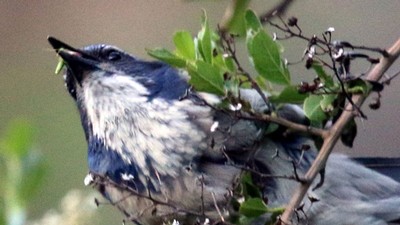USU Prof Establishes Fund for Undergrad Environmental Chem Research
Through monthly payroll deductions over nearly a 20-year period, USU chemistry professor Stephen Bialkowski established an endowment to support undergraduate research in environmental chemistry.
Utah State University professor Stephen Bialkowski understands the costs of industrial progress. The Detroit native watched his father and his stepfather, along with neighbors in his community, succumb to illnesses caused by hazardous working environments in Michigan’s rust belt economy.
“The mindset at that time was to sacrifice your life to make a living for your family,” says Bialkowski, who joined USU’s Department of Chemistry and Biochemistry in 1983.
As an undergraduate at Eastern Michigan University, Bialkowski initially chose forestry as a major, but soon switched to chemistry at the urging of a faculty mentor.
“My professor was studying toxic metals and dioxins from paper manufacturing in the Huron River and quickly involved me in research projects,” he says. “I learned the importance of analytical chemistry to chemical production and its value as a tool to monitor the impact of industry on the environment.”
Bialkowski also gained an appreciation of the value of undergraduate research. To foster similar opportunities for his students, he began making payroll deduction donations nearly 20 years ago toward undergraduate research.
“My initial contributions went to a general science fund, but later I decided to create a specific award for environmental chemistry students,” he says. “Recently, I was surprised to learn how those monthly contributions had grown to an amount sufficient to establish a true endowment. I decided to make a one-time gift to put the fund over the mark.”
Named the Stephen E. Bialkowski Environmental Chemistry Award, the new endowment will provide annual funding of an award to a chemistry or biochemistry undergraduate student to pursue an environmental chemistry research project. Initially, the award will provide about $750 toward the project with an additional $250 cash award for the recipient.
“Environmental chemistry is a relatively new discipline, yet USU has a rich history in the field,” Bialkowski says. “The award is consistent with Utah State’s land-grant tradition of emphasizing agriculture and the environment.”
When he arrived at Utah State some 32 years ago, Bialkowski noted scientists and engineers throughout campus were involved in varied aspects of environmental chemistry.
“I had colleagues in civil and environmental engineering, landscape architecture, biology, range science, watershed sciences, the department now known as plants, soils and climate and others — all investigating similar questions,” he says.
Bialkowski was among USU faculty members who developed USU’s Environmental Chemistry depth course, now a staple for chemistry, nutrition science, engineering and industrial hygiene majors, along with an American Chemical Society-certified environmental chemistry degree program.
Field research, he says, goes hand-in-hand with environmental chemistry education.
“I tell my students, ‘If you don’t go out and measure what’s happening in the environment, you don’t know what’s going on,’” Bialkowski says. “Chemistry is more than what goes on in a test tube.”
He also says undergraduate research benefits more than just the student participants.
“Our undergrads drive our research and many of them chose Utah State specifically because of our university’s emphasis on undergrad research,” Bialkowski says. “They’re not only providing critical manpower; they’re the innovators pushing us forward.”
Related links:
- “USU Professor Named ‘Editor-in-Chief’ of Top Chemistry Journal,” Utah State Today
- USU Department of Chemistry and Biochemistry
- USU College of Science
Contact: Stephen Bialkowski, 435-797-1907, stephen.bialkowski@usu.edu
Writer: Mary-Ann Muffoletto, 435-797-3517, maryann.muffoletto@usu.edu
A native of Detroit, Bialkowski witnessed first-hand the effects of industrial pollution. He tells students, 'If you don't go out and measure what’s happening in the environment, you don’t know what’s going on.’
TOPICS
Chemistry 110storiesComments and questions regarding this article may be directed to the contact person listed on this page.








